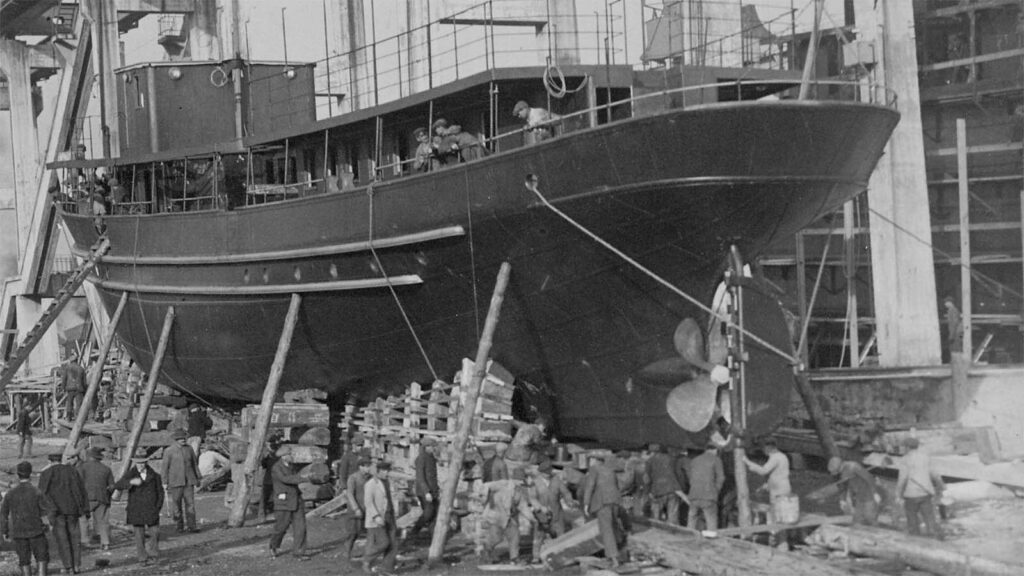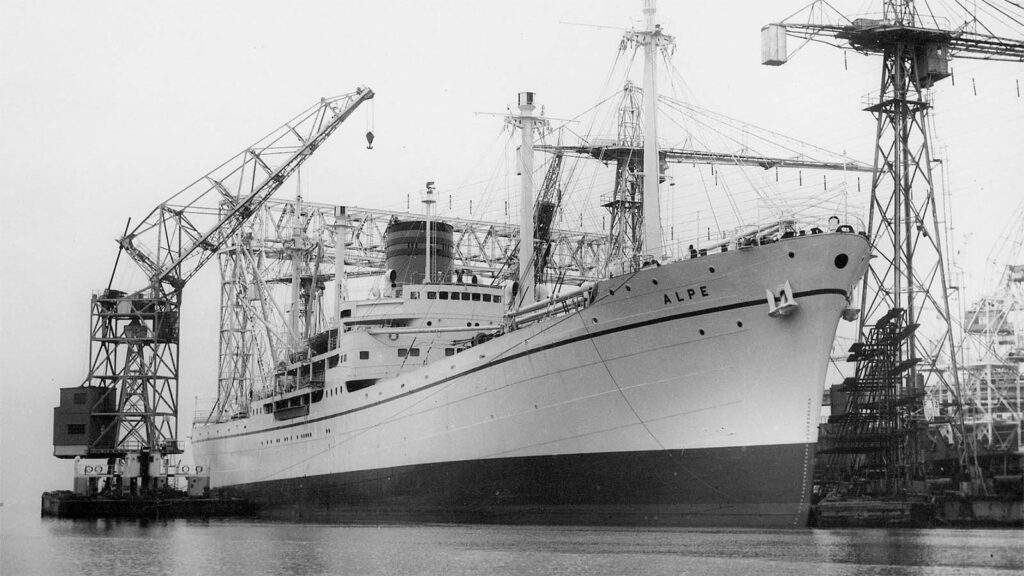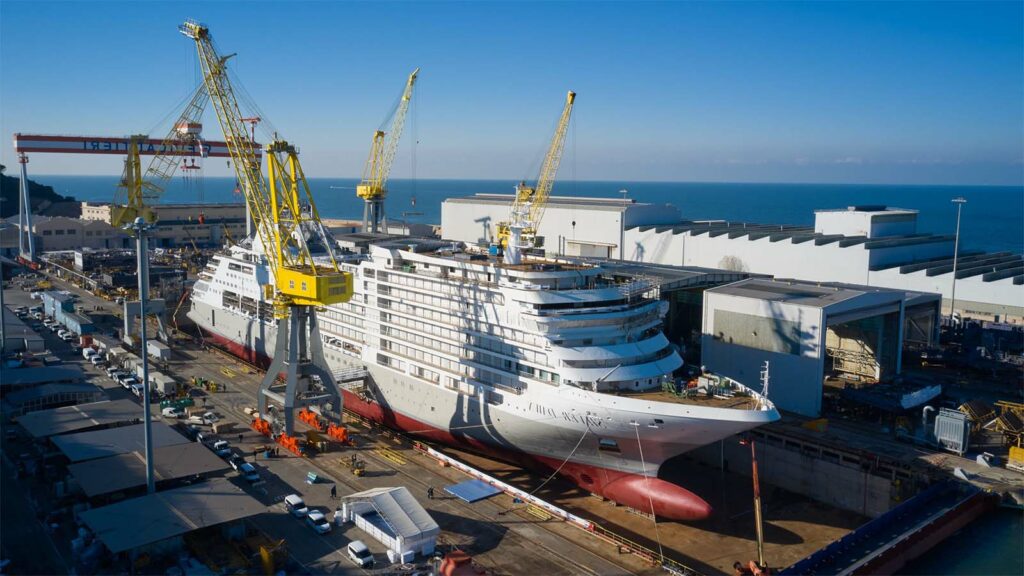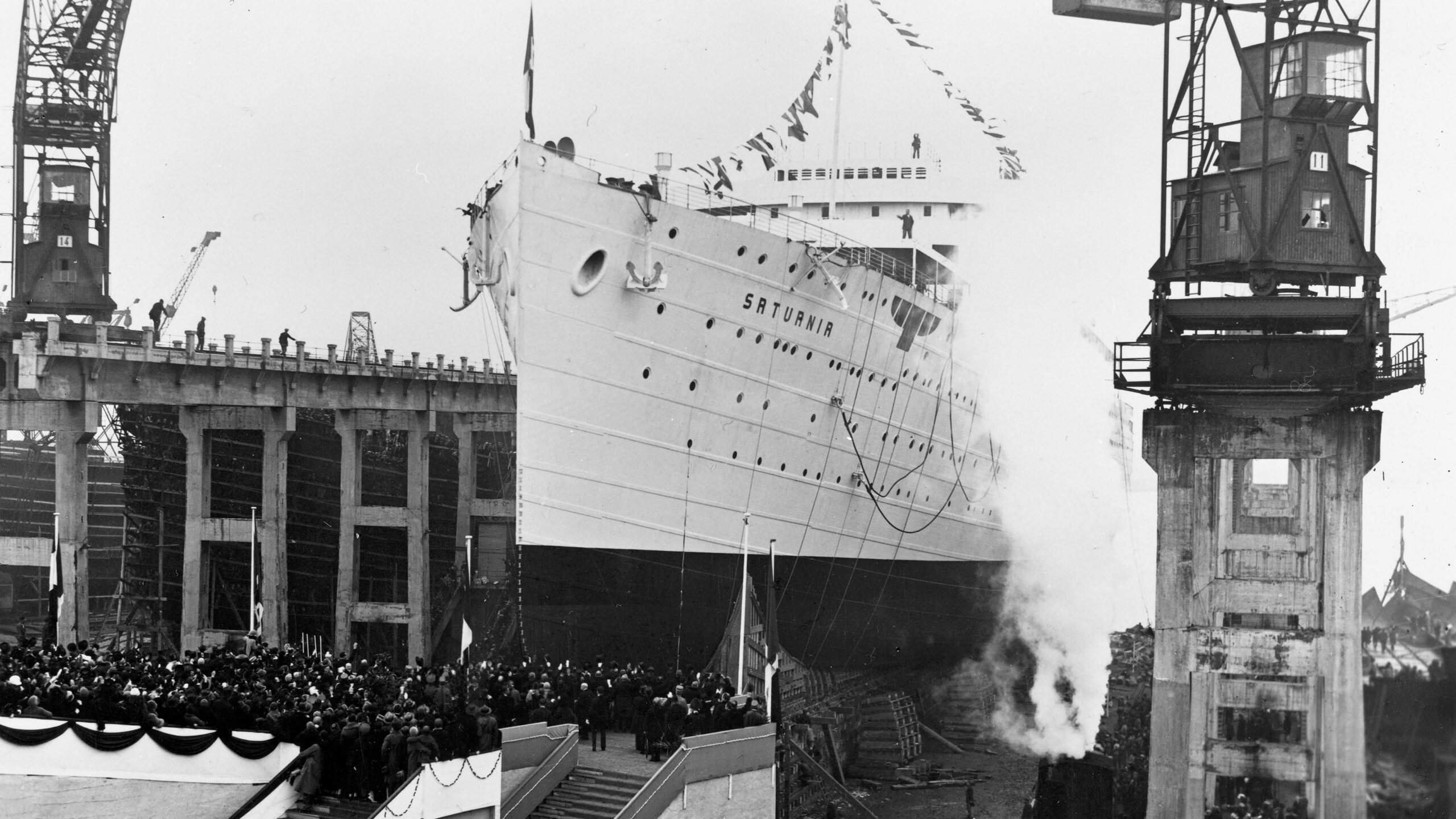Cantiere Navale Triestino (CNT) was founded in Monfalcone on April 3, 1908 by the Cosulich’s, a family of shipowners. Until then, their company – Unione Austriaca di Navigazione – used to order new ships from UK shipyards, which were at the forefront in the field. They decided to open their own shipyard after the 1907 Act, by which the Austro- Hungarian Government encouraged shipbuilding within the empire. They found the perfect location in the area of Panzano. The Cosulich bought the land from contracting companies Faccanoni and Adriatica, which had excavated some basins there to recover the earth required for the construction of the port of Trieste. Bordered by the Valentinis Canal, filled with fresh water coming from the Dottori Canal, this area made it possible to outfit ships while ensuring that the hulls were perfectly preserved.
The residential district of Panzano was created in 1908 by the Cosulich brothers to house shipyard workers. In 1913 a first hypothesis of a workers’ village was formulated by the Associazione Edile di Utilità Pubblica, with plans by engineer Dante Fornasir.
The Monfalcone area was directly involved in World War I, which broke out in July 1914, after Italy went to war against Austria, on May 24, 1915. Part of the population was evacuated, many workers were enrolled in the Austro-Hungarian army, while some machinery from the Cantiere Navale Triestino (CNT) were moved to Budapest so as to not stop all production. There was a bloody battle between the Karst region and the Isonzo and Monfalcone got stuck in the middle. The Italian army entered the city on June 9, 1915, while the violent Austrian bombing was just beginning, destroying the city and the shipyard in the following months. When Austrian troops reoccupied the region after the battle of Caporetto (October 1917), the Cosulich family asked the government for compensation for war damages. However, while the paperwork was still being processed, Italy won the war (4 November 1918).
In June 1930, with the establishment of the Cantieri Riuniti dell’Adriatico (CRDA), an association of shipyards in Monfalcone, Trieste and Muggia, the proprietary connection between the shipyard and the Cosulich family came to an end. After two years, with the merging of the three main national shipping companies and the establishment of Società Italia, the family from Lošinj lost control of its own shipping company (although it remained somewhat independent until 1937). However, the years between the two wars were very successful for the Monfalcone shipyard, which stood out in both the military field (with submarines) and in the civil field, being the only Italian shipyard to receive many orders from abroad, the most prestigious of which was the ocean liner Stockholm.
In 1966, Italy’s two main shipbuilding groups, Ansaldo and CRDA, were merged into Italcantieri, the new company run by IRI. This led to the implementation of the Interministerial Committee for economic planning (CIPE), involving a rationalisation of the shipbuilding industry. As for the Trieste shipyards, the Arsenal was revived following a merger with the San Marco shipyard. The new Arsenale Triestino-San Marco (ATSM) was only intended for ship repairs and conversions, marking the end of the construction business. By contrast, the CIPE plan provided for an expansion of the Monfalcone shipyard into the Giulia area, which led to a significant renewal of facilities and equipment, also favoured by the growing demand for large tankers.
In 1984, Fincantieri was transformed from a financial institution into an operating company. All public shipyards were merged into a national shipbuilding giant, with the purpose to rationalise the sector by looking for new opportunities that would ensure continuous work. Unable to compete with Far-Eastern shipbuilders in the construction of merchant ships, the only option for the Italian shipbuilding industry was to craft high-tech ships. Hence it was decided to focus on cruise ships, an emerging industry with great potential for development.



